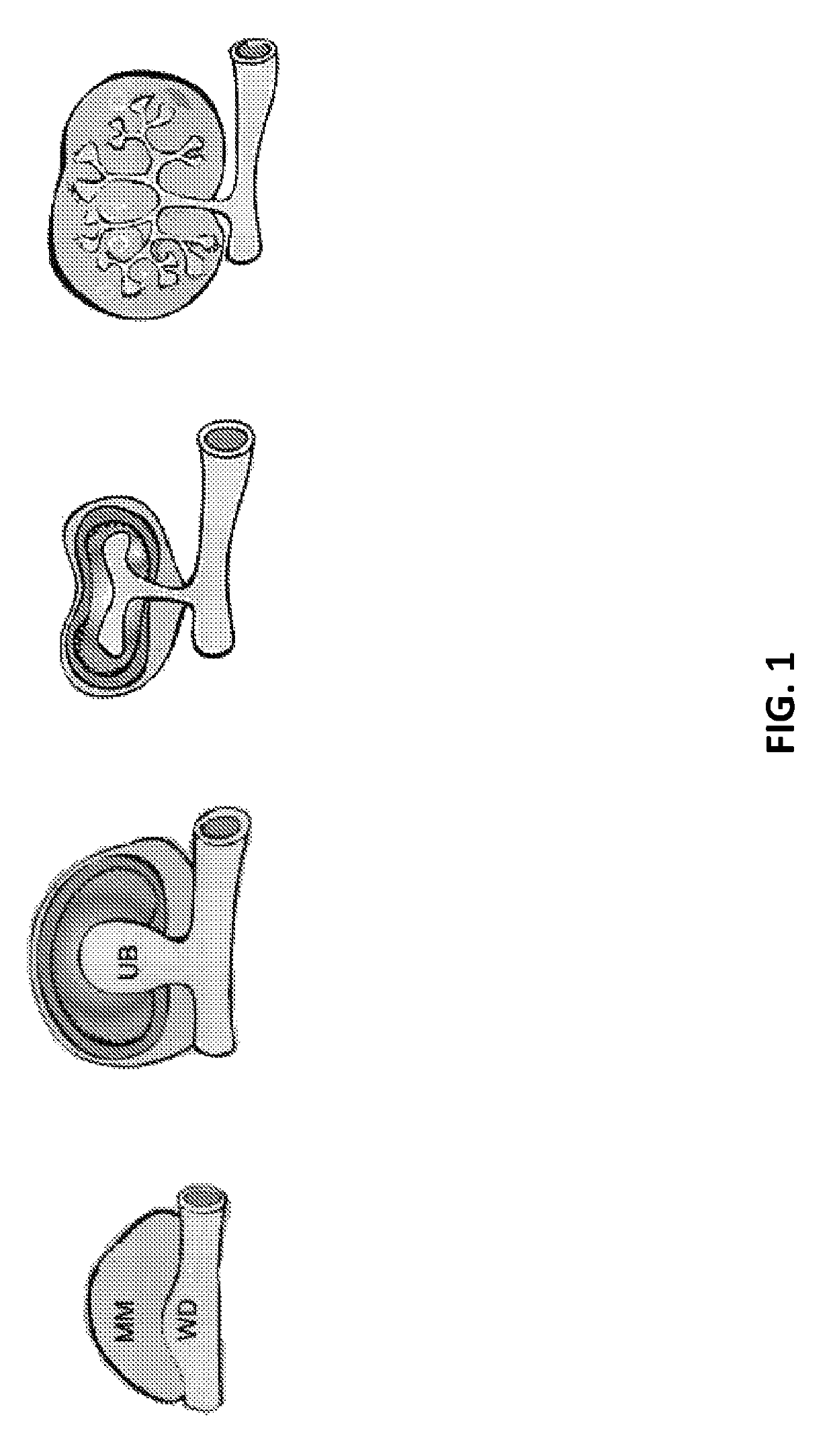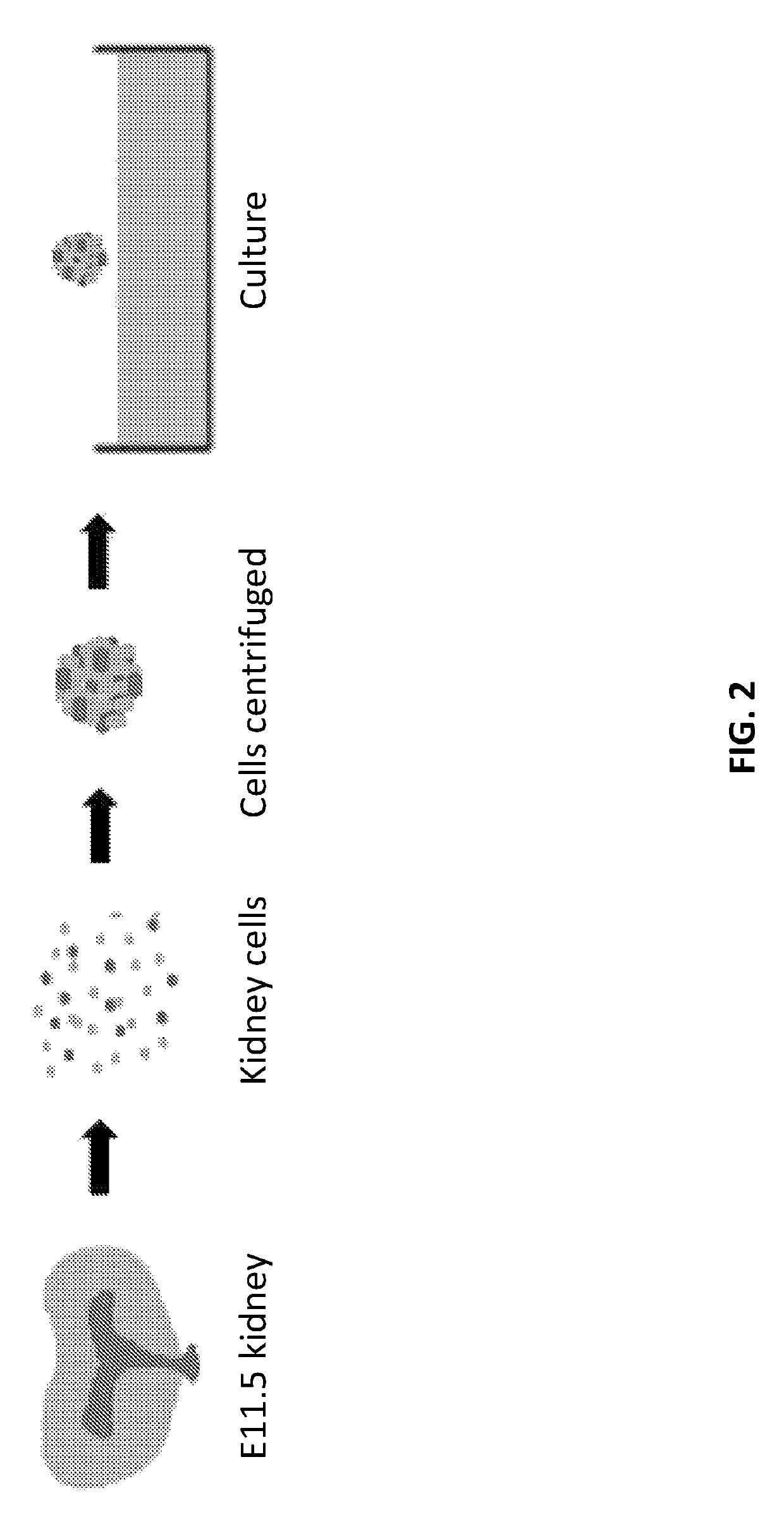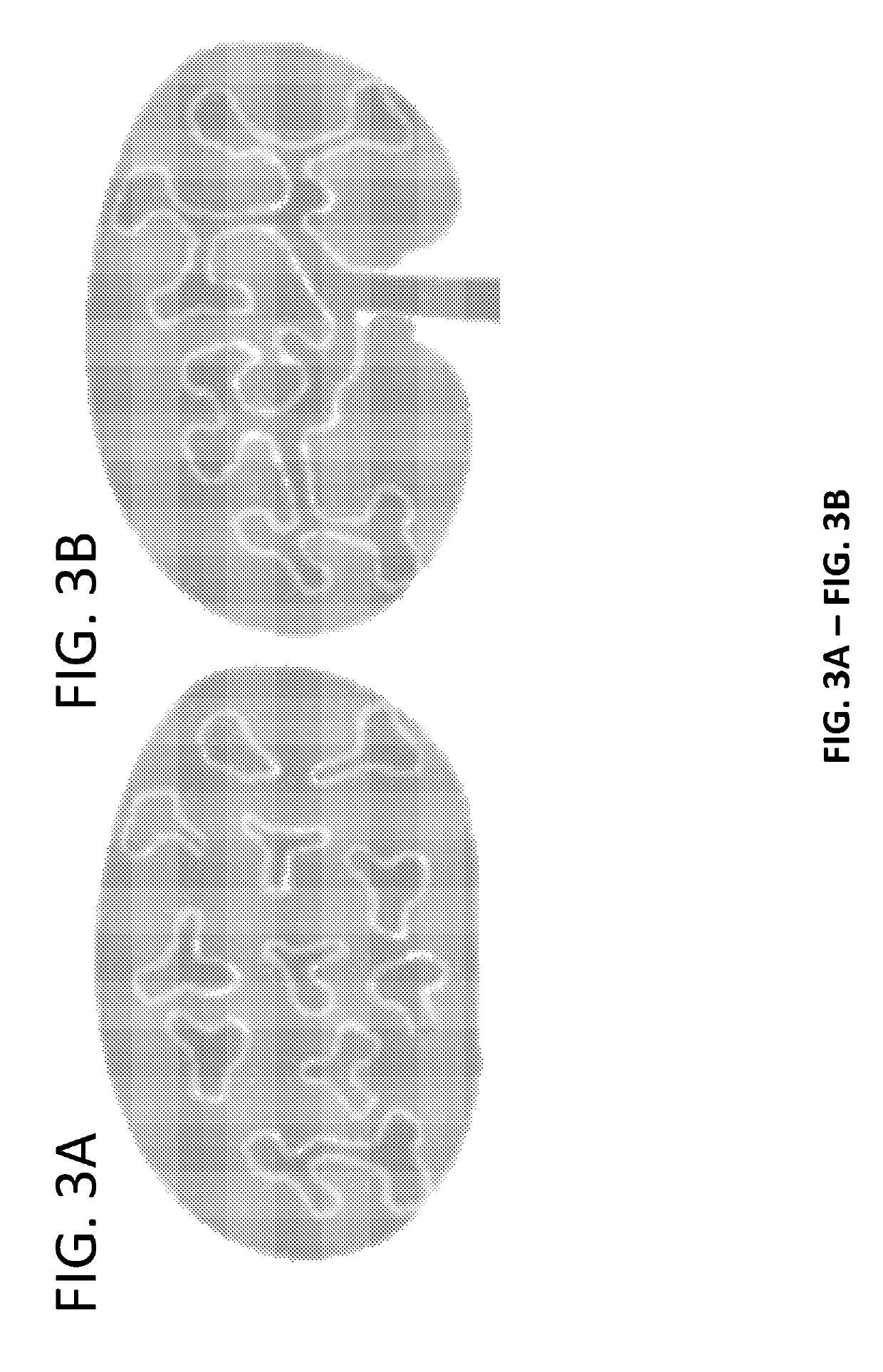Method and apparatus for in vitro kidney organogenesis
a kidney and organogenesis technology, applied in the field of kidney organogenesis methods and apparatuses, can solve the problems of permanent loss of kidney function, limited option, and high cos
- Summary
- Abstract
- Description
- Claims
- Application Information
AI Technical Summary
Benefits of technology
Problems solved by technology
Method used
Image
Examples
experimental examples
[0083]The invention is further described in detail by reference to the following experimental examples. These examples are provided for purposes of illustration only, and are not intended to be limiting unless otherwise specified. Thus, the invention should in no way be construed as being limited to the following examples, but rather, should be construed to encompass any and all variations which become evident as a result of the teaching provided herein.
[0084]Without further description, it is believed that one of ordinary skill in the art can, using the preceding description and the following illustrative examples, make and utilize the compounds of the present invention and practice the claimed methods. The following working examples therefore, specifically point out the preferred embodiments of the present invention, and are not to be construed as limiting in any way the remainder of the disclosure.
example 1
ranching in a T-Shape Kidney Mold Device
[0085]FIG. 8A-E depict the UB tube 20 growing into MM / SC 50 in the MM cell chamber 36 with branching morphogenesis. In FIG. 8B, the end of UB tube 20 that is not in contact with the MM cell chamber remains unbranched. When sufficient branching morphogenesis of the UB tube 20 has occurred within the MM cell chamber 36, as illustrated in FIGS. 8D and E, the embryonic kidney organoid can be removed from the kidney mold by pipette or forceps and implanted into a mammalian subject for further development.
example 2
in a Circular Kidney Mold Device
[0086]FIG. 11A-11B depict the generation of an embryonic kidney organoid without using a precursor micromold. UB cells were seeded directly into the UB cell chamber of a kidney mold device having a plug in the MM cell chamber. FIG. 11A shows the kidney mold device with a rudimentary UB tube (immunostained green) after the plug has dissolved, with a MM / SC aggregate placed in the MM cell chamber. Note that in FIG. 11A, no UB cells are present in the MM cell chamber due to the use of the plug. FIG. 11B shows that branching morphogenesis has begun with the UB tube extending into the MM / SC aggregate.
PUM
| Property | Measurement | Unit |
|---|---|---|
| width | aaaaa | aaaaa |
| width | aaaaa | aaaaa |
| width | aaaaa | aaaaa |
Abstract
Description
Claims
Application Information
 Login to View More
Login to View More - R&D
- Intellectual Property
- Life Sciences
- Materials
- Tech Scout
- Unparalleled Data Quality
- Higher Quality Content
- 60% Fewer Hallucinations
Browse by: Latest US Patents, China's latest patents, Technical Efficacy Thesaurus, Application Domain, Technology Topic, Popular Technical Reports.
© 2025 PatSnap. All rights reserved.Legal|Privacy policy|Modern Slavery Act Transparency Statement|Sitemap|About US| Contact US: help@patsnap.com



